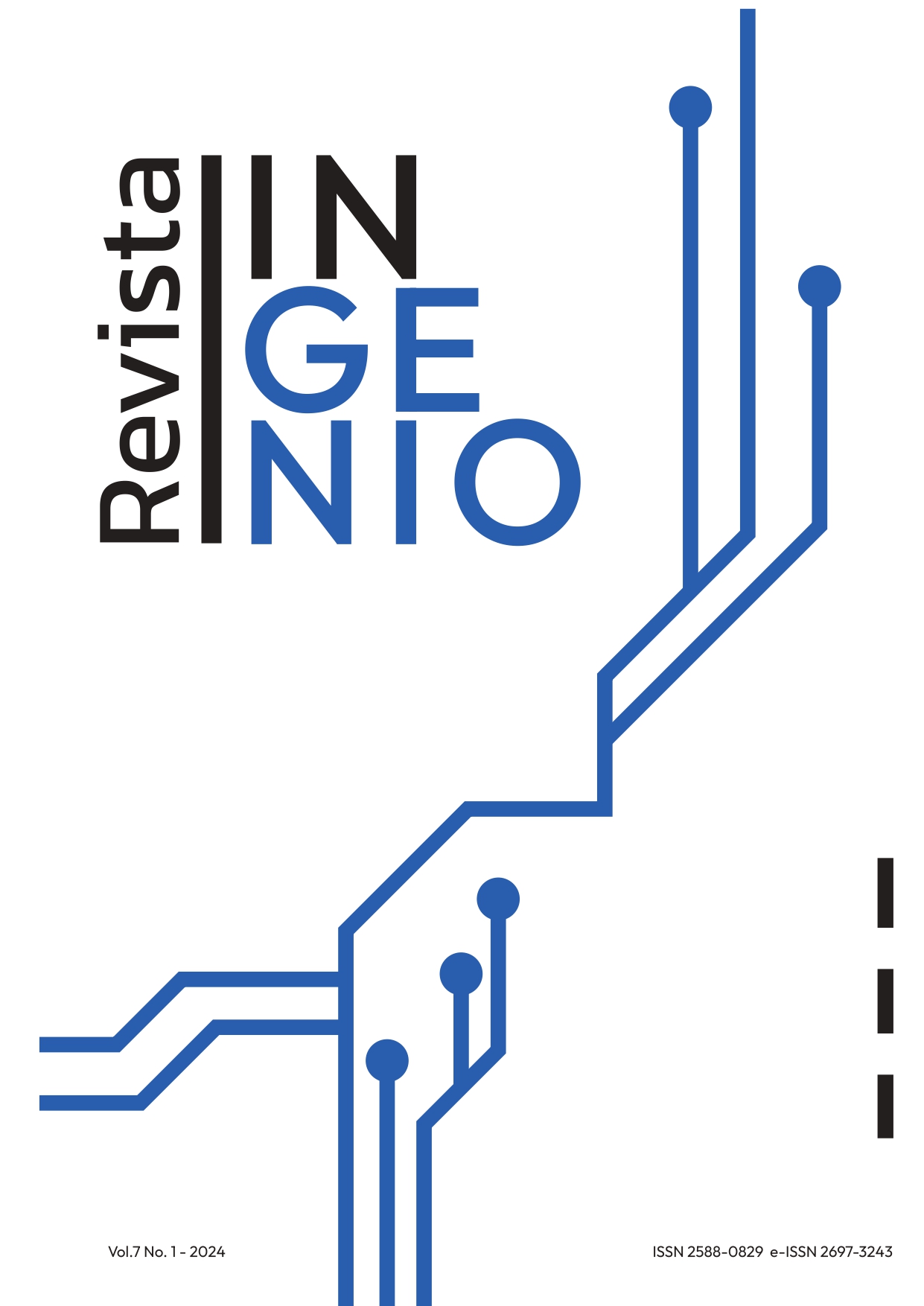Development of an Autonomous Model for Transportation of Young People from 20 to 25 Years Old in Ambato - Ecuador, Who Use Public Transportation and/or Walk
Main Article Content
Abstract
The technological development of the transportation system over the years has shown a constant evolution allowing, in an efficient way, to improve the movement of people, reducing travel times, increasing the capacity of users, reducing the emission of polluting gases with the implementation of alternative energies, and innovating in the area of technology with autonomous devices capable of performing all the necessary operations for their displacement. The objective of this document is to present the development process of an autonomous model for the transportation of young people between 20 and 25 years old in the city of Ambato/Ecuador, as an alternative to the collective public and pedestrian modes of transportation. To address this problem, information was collected through interviews with potential users, according to the research target, using the methodology of Startup Essentials and Clientograms to define a value proposition based on an identified problem that correlates, in a formal and aesthetic way with the environment of the city. A reflection of the data obtained from the clients and the digital prototype that responds to the needs and requirements of the users, providing security and comfort in daily commuting, highlighting the latent need in the creation of this type of products is presented.
Downloads
Metrics
Article Details

This work is licensed under a Creative Commons Attribution-NonCommercial-NoDerivatives 4.0 International License.
References
G. Osorio y R. Viganò, ¨Propuesta de solución bimodal al problema de contaminación vehicular urbana¨, Ingeniería e Investigación, vol. 27, pp. 143-148, diciembre 2007. DOI: https://doi.org/10.15446/ing.investig.v27n3.14855
Goyes-Balladares, A. C., & Moya-Jiménez, R. C, “Aprovechamiento y presentación de potencialidades sostenibles en el modelo de movilidad urbana del centro de la ciudad de Ambato”, Hábitat Sustentable, vol. 12, no. 2, pp.66–83, diciembre 2022. DOI: https://doi.org/10.22320/07190700.2022.12.02.05
L.P. Pereyra, A. Gutiérrez y M.M Nerome, ¨La inseguridad en el transporte público del Área Metropolitana de Buenos Aires. Experiencias y percepciones de mujeres y varones¨, Territorios, vol. 39, pp. 71-95, diciembre 2018. DOI: https://doi.org/10.12804/revistas.urosario.edu.co/territorios/a.6310
E. Ruiz Ranz, ¨La ciudad inteligente y su impacto en la vida urbana: Los nuevos sistemas de movilidad que reestructurarán el urbanismo del S.XIX. El coche autónomo¨, tesis fin de grado, Urbanística y Ordenación del Territorio, UPM, Madrid, España, 2018.
R. Campos Canales y G. Pérez, ¨Tecnología y recambio energético en el transporte automotor de América Latina y el Caribe¨, FAL CEPAL, vol. 8, pp. 6-8, 2018.
Y. Li, M. Díaz, S. Morantes y Y. Dorati, ¨ Vehículos autónomos: Innovación en la logística urbana¨, Iniciación Científica, vol. 4, pp. 34-39, 2018. DOI: https://doi.org/10.33412/rev-ric.v4.1.1864
F. Golbabaei, T. Yigitcanlar y J. Bunker (2020). The role of shared autonomous vehicle systems in delivering smart urban mobility: A systematic review of the literature, International Journal of Sustainable Transportation. [Online]. DOI:10.1080/15568318.2020.1798571 DOI: https://doi.org/10.1080/15568318.2020.1798571
Grupo de Investigación de Ingeniería del Transporte (GIIT). (2023). UPS presenta proyecto de investigación ANTA, primer vehículo autónomo de Latinoamérica en el sector educativo. [Online]. UPS, Cuenca, Ecuador. Disponible en: https://www.ups.edu.ec/noticias?articleId=1713908&byid
J. Levinson, J. Askeland, J. Becker, J. Dolson, D. Held, S. Kammel, J.Z. Kolter, D. Langer, O. Pink, V.R. Pratt, M. Sokolsky, G. Stanek, D.M Stavens, A. Teichman, M. Werling y S. Thrun, ¨ Towards fully autonomous driving: Systems and algorithms¨, Intelligent Vehicles Symposium, pp. 163-168, ISBN: 978-1-4577-0890-9, 2011. DOI: https://doi.org/10.1109/IVS.2011.5940562
M. Schweitzer, A. Unterholzner, and H.-J. Wuensche, ¨BReal-timevisual odometry for ground moving robots using GPUs, in Proc. Int. Conf. Comput. Vis. Theory Appl. ¨, pp. 20–27, 2010. DOI: https://doi.org/10.5220/0002821200200027
L. Prior Sancho, ¨Diseño e implementación de un sistema de control con mecanismo anti-colisones para un vehículo autónomo¨, tesis fin de grado, Electrónica Industrial y Automática, UPC, Barcelona, España, 2022.
E. García, ¨Diseño de un prototipo de vehículo autónomo¨, tesis fin de grado, Sistemas de Telecomunicación, UPM.
E. Carreño, E. Vacca y I. Lugo. (2012). Diseño y fabricación de un vehículo autónomo impulsado por energía solar. Tecnura. [Online]. DOI: 10.14483/udistrital.jour.tecnura.2012.2. a08
Moya Jiménez, R., Magal Royo, T., Flores, M., Caiza, M., “Design and validation of an exoskeleton for hand rehabilitation in adult patients with rheumatoid arthritis”, SmartTech-IC 2021: Proceedings of the Second International Conference on Smart Technologies, Systems and Applications, diciembre 2021. DOI: https://doi.org/10.1007/978-3-031-16078-3_27
U. Sarabia, Medium. (2016). (A. S. Essentials, Productor). [Online]. Disponible en: https://medium.com/clientesfelices





